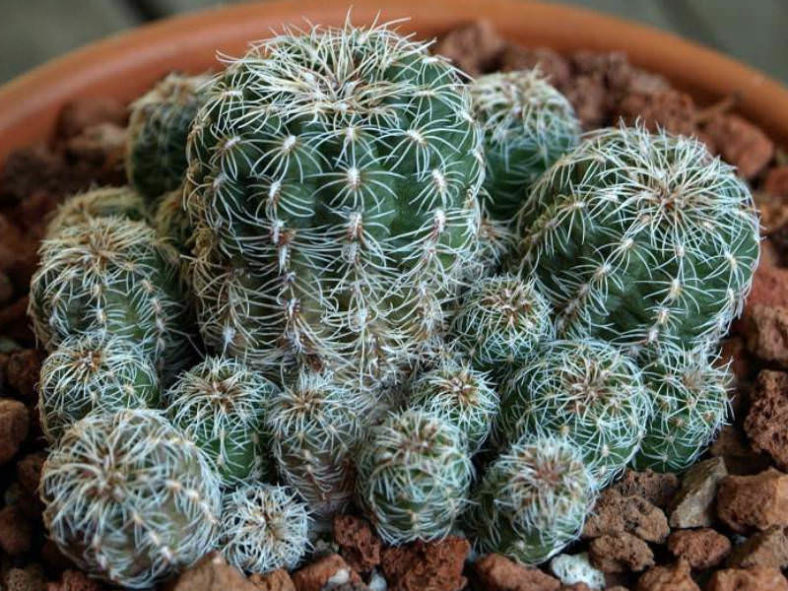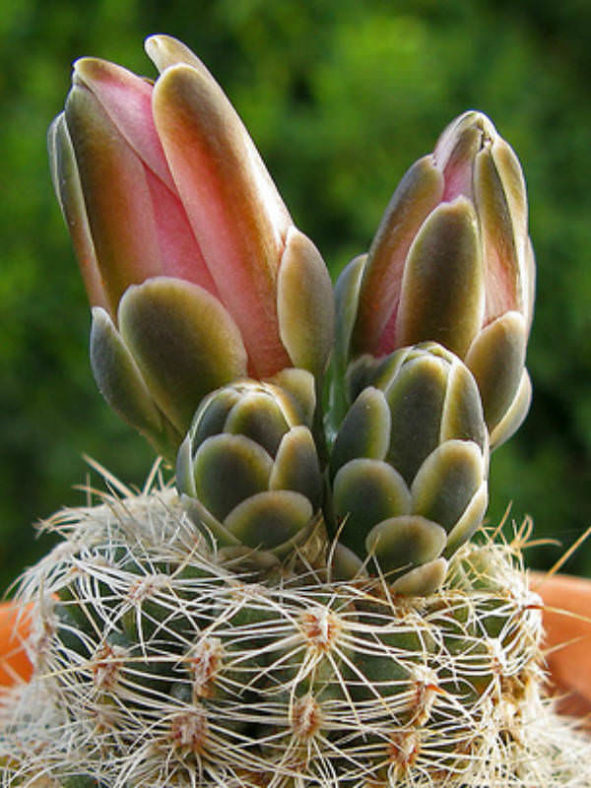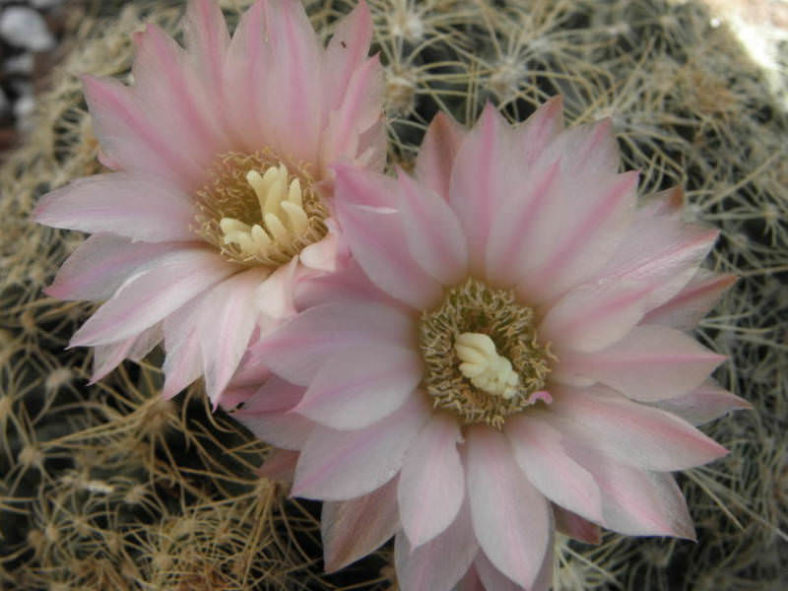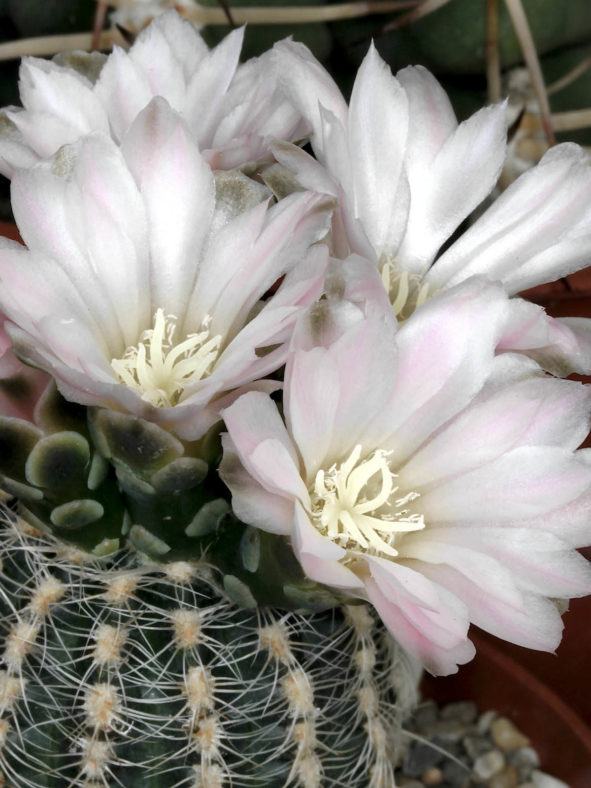Scientific Name
Gymnocalycium bruchii (Speg.) Hosseus
Synonym(s)
Gymnocalycium bruchii subsp. bruchii, Frailea bruchii
Scientific Classification
Family: Cactaceae
Subfamily: Cactoideae
Tribe: Trichocereeae
Genus: Gymnocalycium
Etymology
The specific epithet "bruchii" (pronounced "BROO-kee-eye") honors Franz Karl Bruch or Carlos Bruch (1869-1943), a German-born Argentinian entomologist and archaeological collector.
Origin
Gymnocalycium bruchii is native to Argentina (Córdoba and San Luis).
Description
Gymnocalycium bruchii is a dwarf cactus that forms clumps of blue-green stems with 12 shallow ribs and woolly areoles that bear clusters of white to grayish, bristle-like spines. The stems are spherical, depressed at the apex, and can reach only 1.5 inches (3.8 cm) in height and 2.5 inches (6.3 cm) in diameter.
The flowers are funnel-shaped and can measure up to 2 inches (5 cm) in length, with nearly equal diameters. They appear in spring in different shades of pink and white.

How to Grow and Care for Gymnocalycium bruchii
Hardiness: USDA hardiness zones 8a to 11b: from 10°F (-12.2°C) to 50°F (10°C).
Some Gymnocalyciums are shade-seeking in the wild, growing among shrubs or grasses, while others thrive in complete exposure. Therefore, some plants will require light shading from the sun in the hottest months, but overexposure causes flower loss.
The potting medium's balance should be sufficient to allow good drainage so that the plants do not sit in soggy soil for more than a day or two after watering.
Watering in the summer months, while the plants are growing well, can be frequent (weekly for small plants in small pots), but always allow the compost to nearly dry out before rewatering. Watering in the winter months is unwise and, indeed, unnecessary. The difficult times are spring and autumn.
Species that produce offsets can be readily propagated by cuttings. Gymnocalycium seeds germinate well when fresh and can be stored for a few years in cold conditions.
See more at How to Grow and Care for Gymnocalycium.
Links
- Back to genus Gymnocalycium
- Succupedia: Browse succulents by Scientific Name, Common Name, Genus, Family, USDA Hardiness Zone, Origin, or cacti by Genus
Photo Gallery
Click on a photo to see a larger version.


